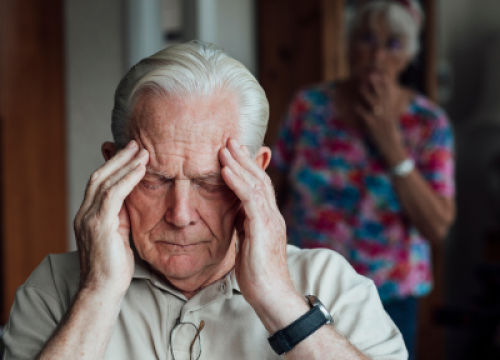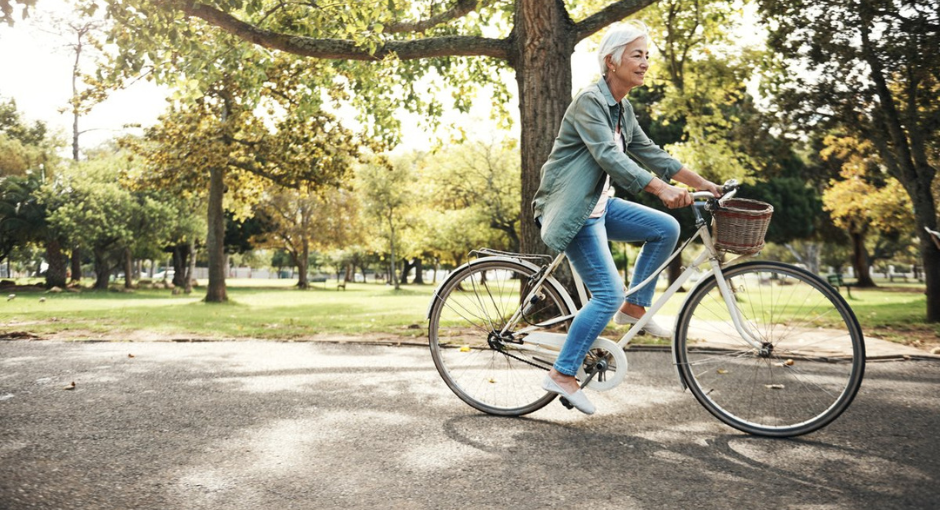Aerobic Exercise Positively Alters Parkinson’s Brain

Getting regular exercise is essential to managing Parkinson’s disease (PD). It is well established that exercise promotes aerobic conditioning, strength, balance, flexibility and mobility, which can substantially improve overall quality of life.
Multiple clinical trials have demonstrated that aerobic exercise in particular, can enhance cognitive functioning, such as learning, thinking, remembering and problem solving. Further, a 2019 PD clinical trial called Park-in-Shape, investigating the effectiveness of remotely supervised aerobic exercise (using a stationary bike) resulted in a reduction of PD movement symptoms.
We know brain heath and cardiovascular fitness are connected. What we don’t know is how and where in the brain aerobic exercise is enhancing cognitive functions and reducing motor symptoms for people with PD.
A study recently published in the Annals of Neurology, “Aerobic exercise alters brain function and structure in Parkinson’s disease: A randomized controlled trial” (Johansson et al., 2022) investigated how aerobic exercise may influence PD-related functional and structural changes in the brain. The study also explored the effects of aerobic exercise on the substantia nigra, which helps the brain produce with dopamine. Movement disorders specialist Bastiaan R. Bloem, MD, PhD, from Nijmegen Parkinson Center — a Parkinson’s Foundation Center of Excellence — is one of the study’s authors.
The study further drew upon the study authors’ previous Park-in-Shape research, which was a single-center, six-month trial of 130 sedentary people with PD, ages 30–75 years, who experienced mild symptoms, and were either unmedicated or on stable dopaminergic medication.
Half of the participants were randomly assigned to ride a stationary bike (equipped with gaming feature) at home for 30- to 40-minute sessions at 50 to 80 percent of their ideal target heart rate. The other half (the control group) were assigned to do 30 minutes of stretching, flexibility and relaxation exercises. Both groups exercised in their own homes three times per week for 30 to 45 minutes over six months. Both groups received a motivational app and remote supervision.
To assess potential progress, researchers used a rating scale that measures PD symptoms (called the Unified Parkinson’s Disease Rating Scale (MDS-UPDRS)). Participants were assessed at the beginning of the study and at the six-month follow-up to provide a snapshot of disease severity. Additionally, there was a subset from this trial (25 people from the bike group and 31 from the stretching group) who underwent:
- Functional MRIs to measure which parts of the brain are more active by measuring blood flow changes in the brain
- Resting state MRIs for anatomical structure comparisons
- Oculomotor (eye) movement cognitive control tests

Results
At the six-month follow-up:
- The aerobic exercise group had a shift in balance of connectivity from the sensory motor region of the cortex (the outermost layer of the brain) to the putamen region of the brain. The balance in connectivity was shifted in favor of connections between sensory motor cortex to the front part of putamen instead to the back part of putamen.
- The brain atrophy (brain shrinkage) worsened with time in the stretching group.
- The aerobic exercise group had lower brain atrophy (less brain shrinkage) compared to the stretching group.
- No change in substantia nigra area was found in either the aerobic nor the stretching group.
- The aerobic exercise group experienced improved cognitive control compared to the stretching group.
- The aerobic exercise group had a significantly larger change in functional connectivity within the right frontoparietal network, a cognitive control network, located at the intersection of the frontal (the most front area) and parietal (the upper back area) section of the brain.
What does this mean?
For all people, physical inactivity is a leading modifiable risk factor for cognitive decline, diminished mobility, and reduced quality of life. For people with PD, this study additionally suggests that aerobic exercise, but not stretching, can impart measurable protections and improvements in PD progression, both physically and cognitively.
Specifically, the aerobic exercise group had a a relative posterior-to-anterior shift in sensorimotor cortex connectivity to putamen. What does this mean? The putamen is involved in learning and motor control/voluntary movement. Generally with PD, the posterior (back part of the) putamen is negatively affected by dopamine depletion, whereas the anterior (front part of the) putamen is relatively spared, allowing for more available dopamine. It has been reported that parts of cortex (the outermost layer of the brain), that normally communicate with the posterior putamen in healthy individuals rely more on the anterior putamen in people with PD. This study suggests that the aerobic exercise, unlike stretching, led to a functional and structural change in the balance of connectivity towards anterior putamen of the brain of people with PD.
That said, the number of PD participants in this study was relatively small. Further research, involving comparisons between people with PD and those without PD and new brain connectivity needs to be conducted.
Bottom line? Exercise is essential for people with Parkinson’s. According to the Parkinson’s Foundation Parkinson’s Outcomes Project, increasing physical activity to at least 2.5 hours a week can slow decline in quality of life. Research dedicated to better understanding the positive impact of exercise and Parkinson’s ultimately helps us guide potential new treatments and empower the Parkinson’s community.
Learn More
The Parkinson’s Foundation believes in empowering the Parkinson’s community through education. Learn more about PD and aerobic exercise by visitng the below Parkinson’s Foundation resources, or by calling our free Helpline at 1-800-4PD-INFO (1-800-473-4636).
- Podcast Episode 129: Using the New Parkinson’s Exercise Recommendations as Part of Your Treatment Plan
- New Exercise Recommendations for the Parkinson’s Community and Exercise Professionals (blog)
- Episode 3: The Benefits of Exercise for People with Parkinson's Parkinson’s Exercise Recommendations
- Professional Education: Exercise Professionals
Related Blog Posts


















